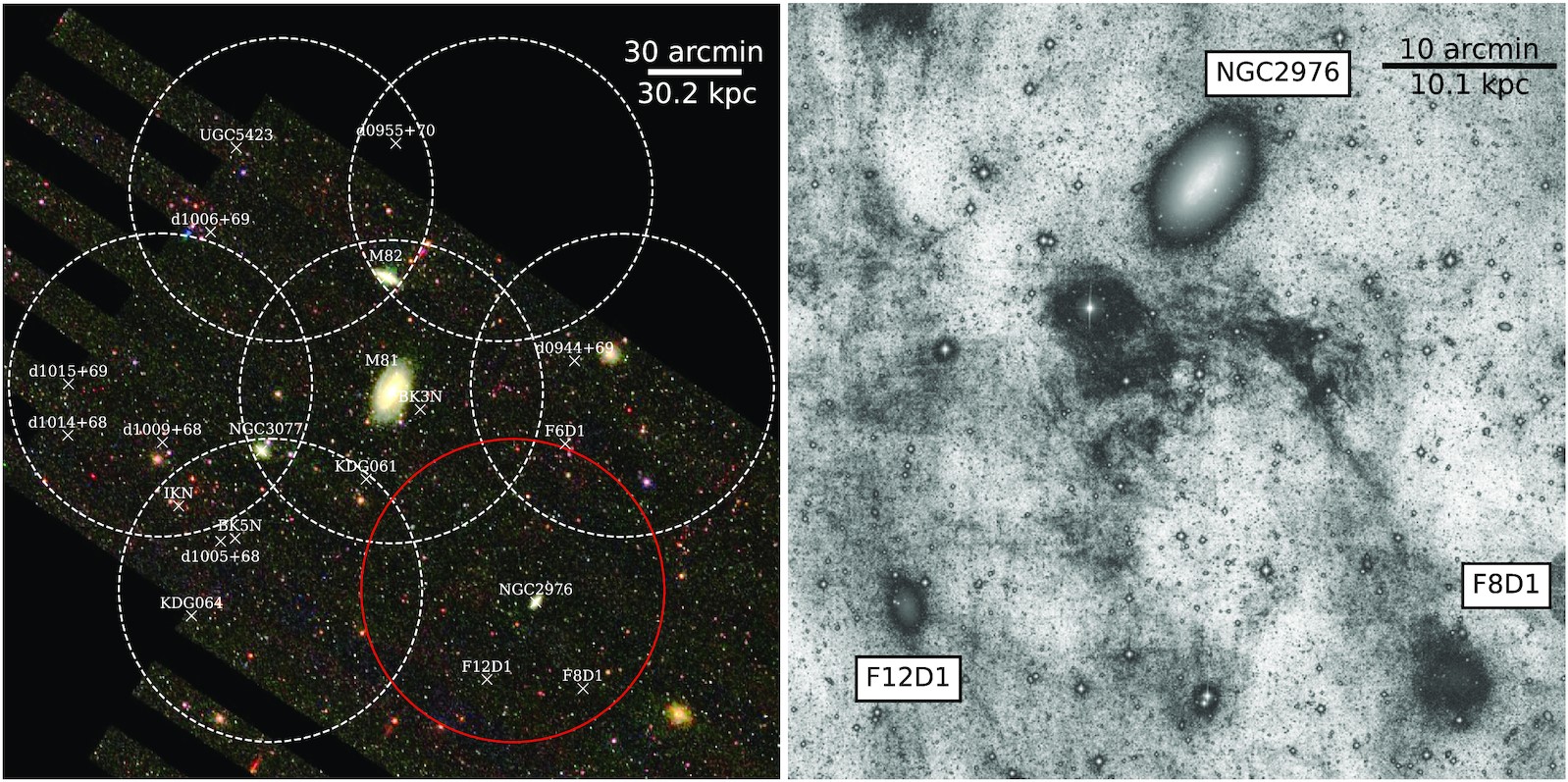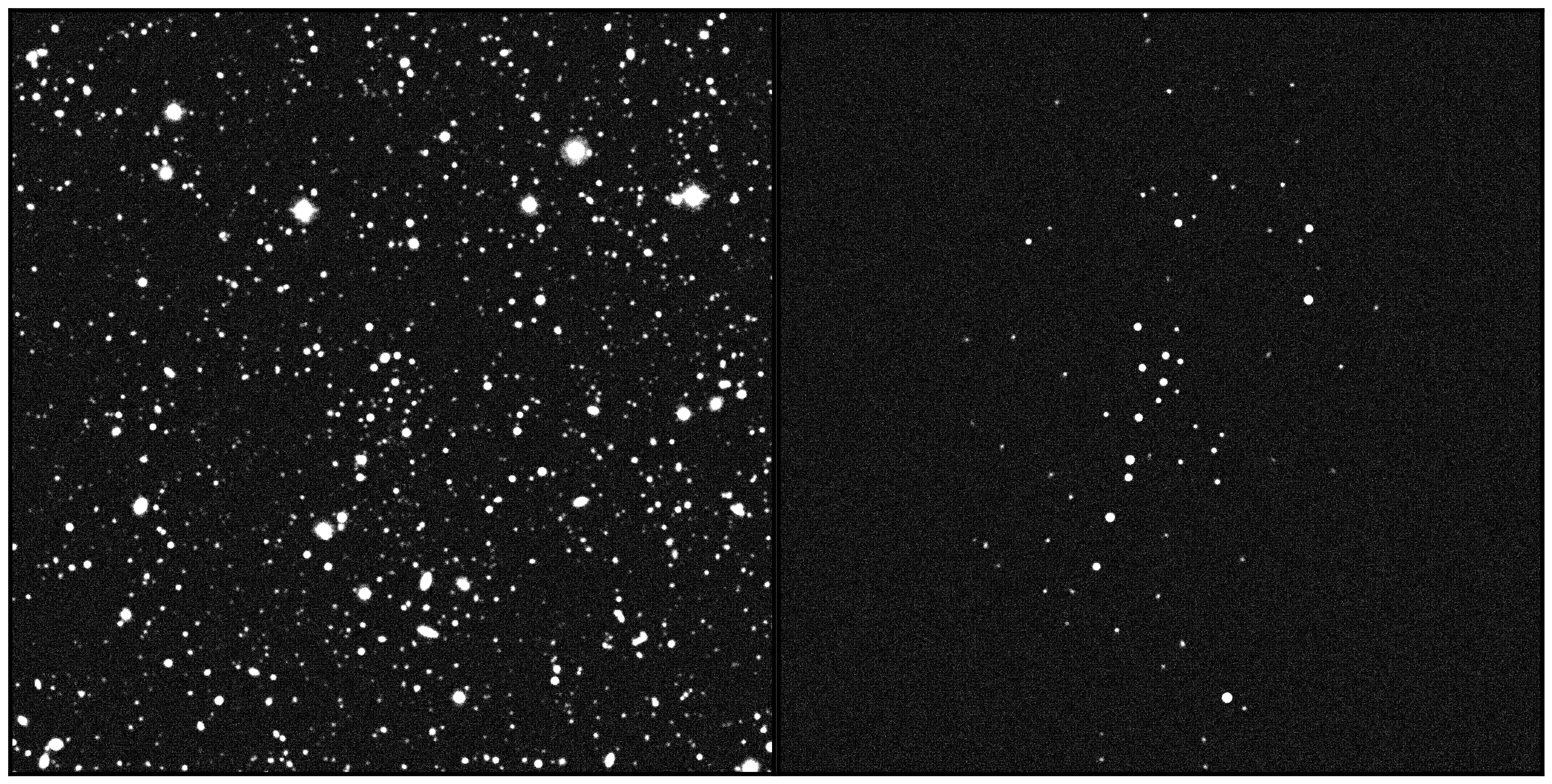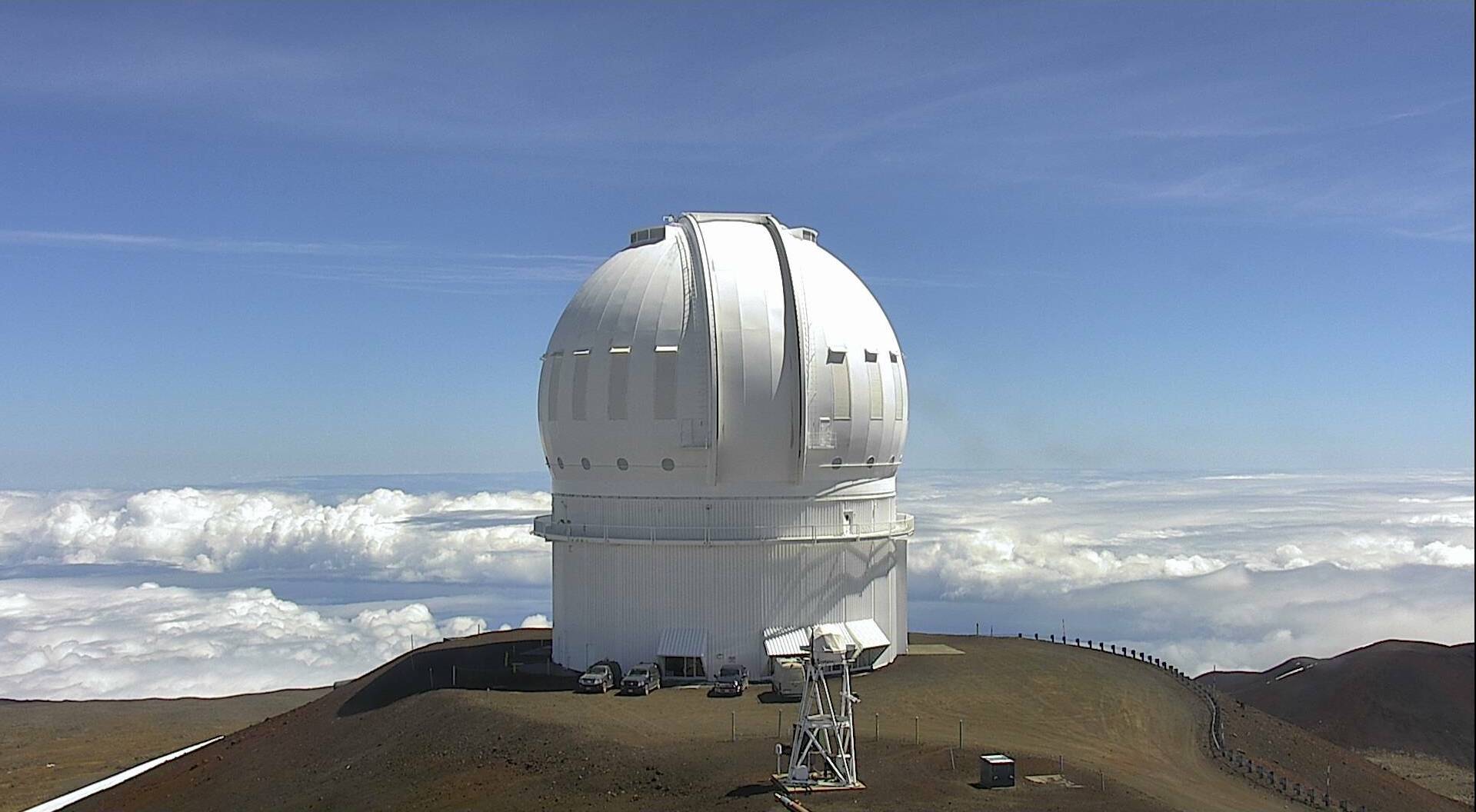A Tale of a Tail: A Tidally-Disrupting Ultra-Diffuse Galaxy in the M81 Group
A giant tidal tail has been discovered emanating from a dwarf galaxy in the nearby M81 Group. The galaxy, named F8D1, is remarkable on account of its low luminosity and large size and is now recognised to be one of the closest examples of an “ultra-diffuse” galaxy. The origin of these enigmatic galaxies has puzzled astronomers for several decades – are they born this way or are their present-day properties the result of processes which have shaped them over their lifetimes? Using observations with Hyper Suprime-Cam (HSC) on the Subaru Telescope and the MegaCam imager on the Canada-France-Hawai'i Telescope, a team of researchers has mapped the tidal stream of stars from F8D1 over 1 degree on the sky, corresponding to two hundred thousand light-years at the distance of the galaxy. Revealing F8D1 to be a galaxy in an advanced state of tidal disruption has implications for both the dynamical evolution of the M81 Group and for the origin of galaxies that exhibit UDG properties.
Since 2014, the science team have conducted a deep contiguous photometric survey of the M81 Group using HSC on the Subaru Telescope (see Figure 1 left panel). Lying at 11.7 million light-years, the M81 Group is one of the nearest galaxy groups. Its proximity and resemblance to the Local Group have fuelled much astronomical research over several decades. It contains more than 40 member galaxies, including the large spiral galaxy M81, the peculiar galaxies M82 and NGC3077, 9 late-type galaxies, at least 20 low-luminosity early-type dwarfs and a variety of stellar debris features, some of which are tidal dwarf galaxy candidates. Strong tidal interactions between M81, M82 and NGC 3077 had been revealed through the neutral hydrogen gas studies. In 2015, the same science team showed , for the first time, that the signatures of these interactions are also present in the low surface brightness stellar distribution.
The F8D1 stream was revealed through analysing the spatial distribution of individual stars with properties which place them at the distance of the M81 Group. Since F8D1 lies at the edge of the survey footprint (see Figure 1 right panel), only one tidal arm can be seen, extending to approximately two hundred thousand light-years to the northeast. The team have recently been awarded further observing time to search a counterpart stream to the southwest.
Rokas Žemaitis, a PhD student at the University of Edinburgh who led the work, commented that “The discovery that F8D1 is tidally disrupting is very exciting and it will be important to establish how many other UDGs also show faint tidal tails”.
To assist in the analysis of the main body of F8D1, the team utilized the Low Surface Brightness (LSB) observing technique unique to MegaCam, CFHT’s 1 degree x 1 degree optical imaging camera. Originally optimized for surveys at CFHT, LSB mode observations of F8D1 illustrate the complex nature of the galaxy’s structure amid Galactic cirrus features, faint gas clouds between the Earth and F8D1. The presence of Galactic cirrus previously obscured the view of F8D1’s tidal tail from discovery. Effectively mapping the cirrus via MegaCam’s observations compliments the observations done with HSC.
“MegaCam’s unique capabilities in LSB mode were essential to deriving the physical properties of F8D1’s tidal tail,” said Jean-Charles Cuillandre, a co-author on the F8D1 paper and prior papers using LSB mode at CFHT. “The collaboration between MegaCam on CFHT and HSC on Subaru opened an unparalleled window in the deep nearby universe.”
The finding of a huge tidal tail from F8D1 is compelling evidence that the galaxy’s present day properties have been strongly shaped by events which have occurred in the past billion years. The team estimate that more than one-third of F8D1’s luminosity is contained in the tidal tail and they suggest that the source of the disruption has been a recent close passage to the massive spiral M81.
“The observations for the team were observed as a ‘snapshot’ program at CFHT, a program that is observed during poorer seeing conditions on Maunakea,” said Todd Burdullis, queued service observing operations specialist at CFHT. “This discovery is a testament to the power of MegaCam’s LSB mode, collaboration with our neighbors at Subaru, and the incredible conditions on Maunakea.”
These results appeared as Žemaitis et al. “A tale of a tail: a tidally disrupting ultra-diffuse galaxy in the M81 group” in the Monthly Notices of the Royal Astronomical Society on 02 November 2022.Additional links
Media Contacts
Mary Beth Laychak
Director of Strategic Communications, Canada-France-Hawai'i Telescope
808-885-3121
laychak@cfht.hawaii.edu
Scientific Contacts
Prof. Annette Ferguson FRSE
Institute for Astronomy, University of Edinburgh
+44 131 668 8401
annette.ferguson@ed.ac.uk
Dr. Jean-Charles Cuillandre
CEA Saclay (Commissariat à l’énergie atomique et aux énergies alternatives)
jc.cuillandre@cea.fr






